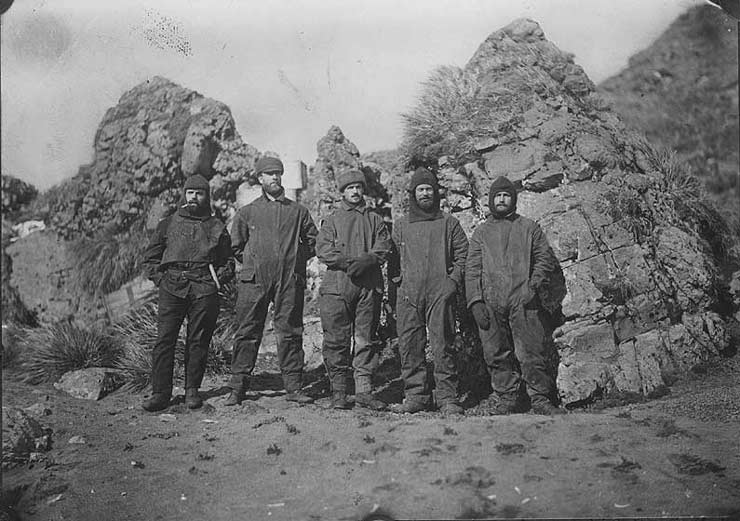 Macquarie Island party, 1911-14
Macquarie Island party, 1911-14
TLF ID R3954
This is a black-and-white photograph of five members of Sir Douglas Mawson's Australasian Antarctic Expedition 1911-14 team at Macquarie Island. The men are posed in front of two rocky outcrops, dressed in heavy Antarctic clothing. The personnel pictured are (left to right) Charles A Sandell, wireless operator and mechanic; G F Ainsworth, leader and meteorologist; A J Sawyer, wireless operator; Harold Hamilton, biologist; and Leslie Russel Blake, geologist and cartographer. The photograph, which is from Mawson's collection, was taken or set up by Leslie Russel Blake and measures 11.2 cm x 15.3 cm. It was published in 1915 in the book 'The home of the blizzard: being the story of the Australasian Antarctic Expedition, 1911-1914' written by Sir Douglas Mawson.
